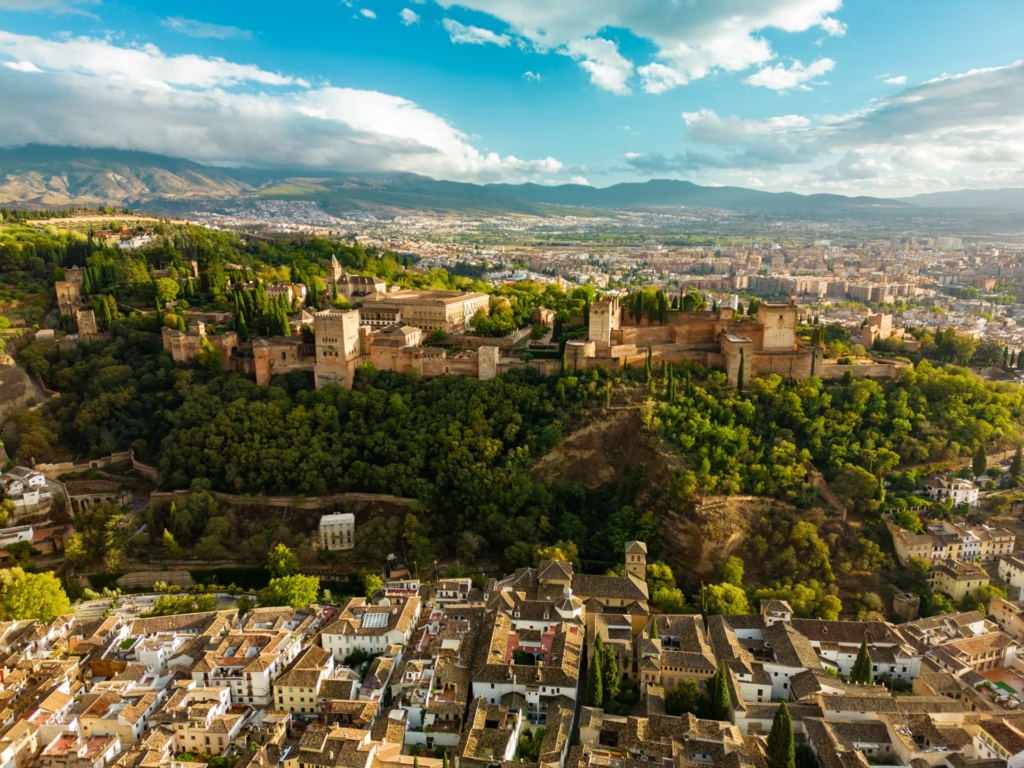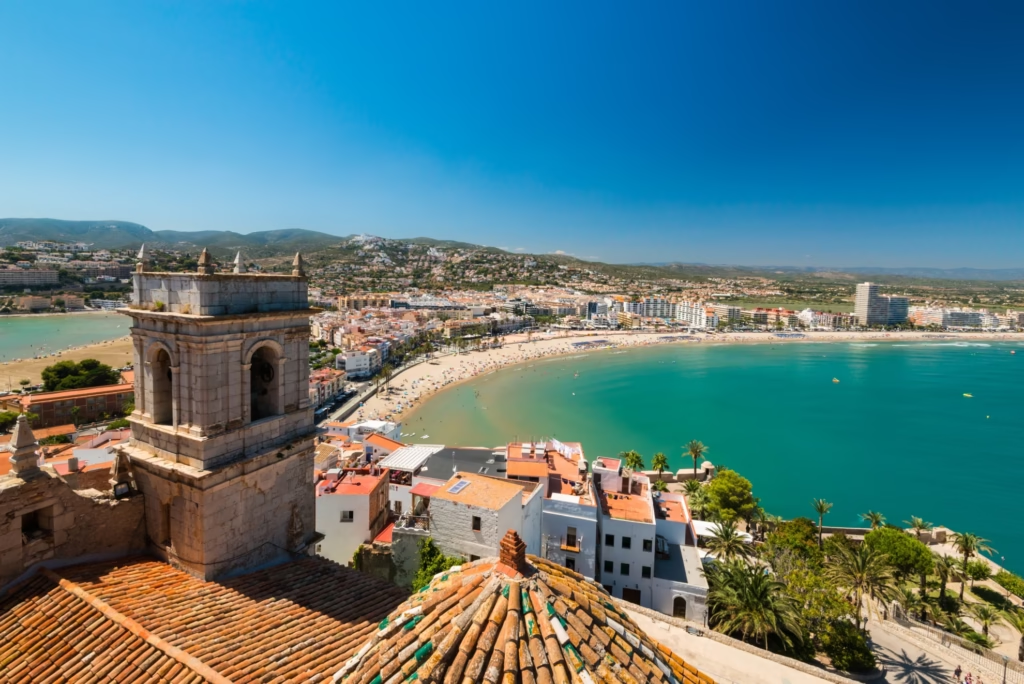Seville, the heart of Andalusia, is an enchanting city that showcases Spain’s rich cultural heritage. From stunning architecture to vibrant festivals, Seville offers an unforgettable experience for travelers. This guide provides all the essential information you need to make the most of your trip to this magical city, featuring the top attractions, best activities, and helpful travel tips. Whether you’re looking for history, entertainment, or simply a taste of Andalusian life, Seville has something for everyone.

Table of Contents
Top Attractions in Seville
Things to Do in Seville
Where to Eat in Seville
Best Time to Visit Seville
Accommodation in Seville
FAQs about Seville
Top Attractions in Seville
1. The Royal Alcázar of Seville
The Royal Alcázar of Seville is a must-visit for any traveler. This beautiful palace is a masterpiece of Moorish architecture, filled with intricate tilework, lush gardens, and elegant fountains. Originally built in the 10th century, the Alcázar reflects the influence of multiple cultures, making it one of the most significant historical landmarks in Seville.
2. Seville Cathedral and Giralda Tower
The Seville Cathedral, the largest Gothic cathedral in the world, is another essential stop. Inside, visitors can admire stunning stained-glass windows, Christopher Columbus’s tomb, and impressive altarpieces. The Giralda Tower is a former minaret that now serves as the cathedral’s bell tower, offering sweeping views of the city.
3. Plaza de España
The Plaza de España is an impressive semicircular plaza built for the Ibero-American Exposition of 1929. Featuring beautiful ceramic tiles, bridges, and a canal, the plaza is a symbol of Seville’s rich culture and history. It is a perfect spot for a leisurely stroll, a boat ride on the canal, or capturing stunning photos.
4. Barrio Santa Cruz
Explore the Barrio Santa Cruz, Seville’s charming old Jewish quarter. The narrow cobblestone streets are filled with colorful houses, quaint plazas, and fragrant orange trees. This area is perfect for exploring on foot and discovering hidden gems, including local shops and tapas bars.
5. Metropol Parasol (Las Setas de Sevilla)
Metropol Parasol, also known as Las Setas, is one of Seville’s modern architectural marvels. The giant wooden structure provides shade to the La Encarnación square and offers an elevated walkway with panoramic views of the city. The site also includes an underground archaeological museum showcasing ancient Roman and Moorish artifacts.
Things to Do in Seville
1. Take a Flamenco Show
Seville is famous for flamenco, a traditional Spanish dance that is full of passion and emotion. Visiting a flamenco show is a must when in Seville, as the city is considered the birthplace of this art form. You can catch live flamenco performances at venues like Casa de la Memoria or El Palacio Andaluz.
2. Cruise the Guadalquivir River
For a different perspective of Seville, consider taking a boat tour along the Guadalquivir River. You will get to see some of Seville’s iconic landmarks, such as the Torre del Oro, while enjoying a relaxing journey. Cruises typically last for about an hour and provide an excellent way to unwind while learning about the city’s history.
3. Explore the Triana Neighborhood
Triana, located on the west bank of the Guadalquivir River, is known for its pottery workshops, tapas bars, and flamenco culture. This lively neighborhood offers a true taste of Seville’s local culture. Visit the Triana Market for fresh produce, regional delicacies, and traditional ceramics.
Where to Eat in Seville
1. Taste Authentic Tapas
Seville is famous for its tapas culture, and no visit is complete without indulging in these small, flavorful dishes. Some popular tapas bars to check out are El Rinconcillo, the oldest bar in Seville, and La Azotea for a more modern take on tapas.
Recommended Tapas: Try espinacas con garbanzos (spinach with chickpeas) or salmorejo (a thick tomato soup).
2. Traditional Andalusian Cuisine
If you’re in the mood for traditional Andalusian cuisine, head to Casa Robles or El Faro de Triana. These restaurants offer a wide variety of regional dishes, including paella, gazpacho, and jamón ibérico.
Best Time to Visit Seville
1. Spring and Fall
The best times to visit Seville are during the spring (March to May) and fall (September to November). During these seasons, the weather is pleasant, with daytime temperatures ranging between 20°C to 25°C (68°F to 77°F). Additionally, spring is when Seville hosts some of its most popular festivals, such as Semana Santa (Holy Week) and Feria de Abril (April Fair).
2. Summer
Seville is known for its hot summers, with temperatures often exceeding 40°C (104°F) in July and August. If you decide to visit during the summer, make sure to stay hydrated, wear light clothing, and take advantage of siestas during the hottest part of the day.
Accommodation in Seville
1. Luxury Hotels
For a luxurious stay, consider booking a room at the Hotel Alfonso XIII, one of the most iconic hotels in Seville. This lavish hotel offers top-notch amenities, beautiful architecture, and a central location.
2. Budget-Friendly Options
If you’re traveling on a budget, Seville also has a variety of affordable options. Hostels like Oasis Backpackers’ Palace and La Banda Rooftop Hostel provide comfortable stays with plenty of opportunities to meet other travelers.
FAQs about Seville
1. What is Seville famous for?
Seville is famous for its rich history, stunning architecture, flamenco dancing, and lively festivals such as Semana Santa and Feria de Abril. The city’s Royal Alcázar, Seville Cathedral, and Plaza de España are among its most iconic attractions.
2. How many days should I spend in Seville?
A three-day visit is ideal to experience the best of Seville. This allows enough time to visit all the main attractions, explore different neighborhoods, and enjoy a flamenco show without feeling rushed.
3. Is Seville walkable?
Yes, Seville is a very walkable city. Most of the key attractions are located in the city center, and the charming streets of Seville make walking an enjoyable experience. Public transportation, including buses and trams, is also available if needed.
4. What is the local cuisine like in Seville?
The local cuisine in Seville is characterized by tapas, seafood, jamón ibérico, and gazpacho. Seville has a vibrant food scene, with a mix of traditional Andalusian dishes and contemporary Spanish cuisine.
5. Do I need to book tickets in advance for major attractions?
It is recommended to book tickets in advance for major attractions like the Royal Alcázar and the Seville Cathedral. This helps avoid long waiting times, especially during peak tourist seasons.
Conclusion
Seville is a captivating city that offers something for every traveler. From historic landmarks like the Royal Alcázar and Seville Cathedral to the lively neighborhoods of Triana and Santa Cruz, there’s no shortage of amazing experiences to be had. Whether you’re sampling delicious tapas, watching a mesmerizing flamenco performance, or taking a leisurely boat ride along the Guadalquivir River, Seville will leave you with memories to last a lifetime. Make sure to plan your trip well and enjoy every moment in this beautiful Andalusian city.

